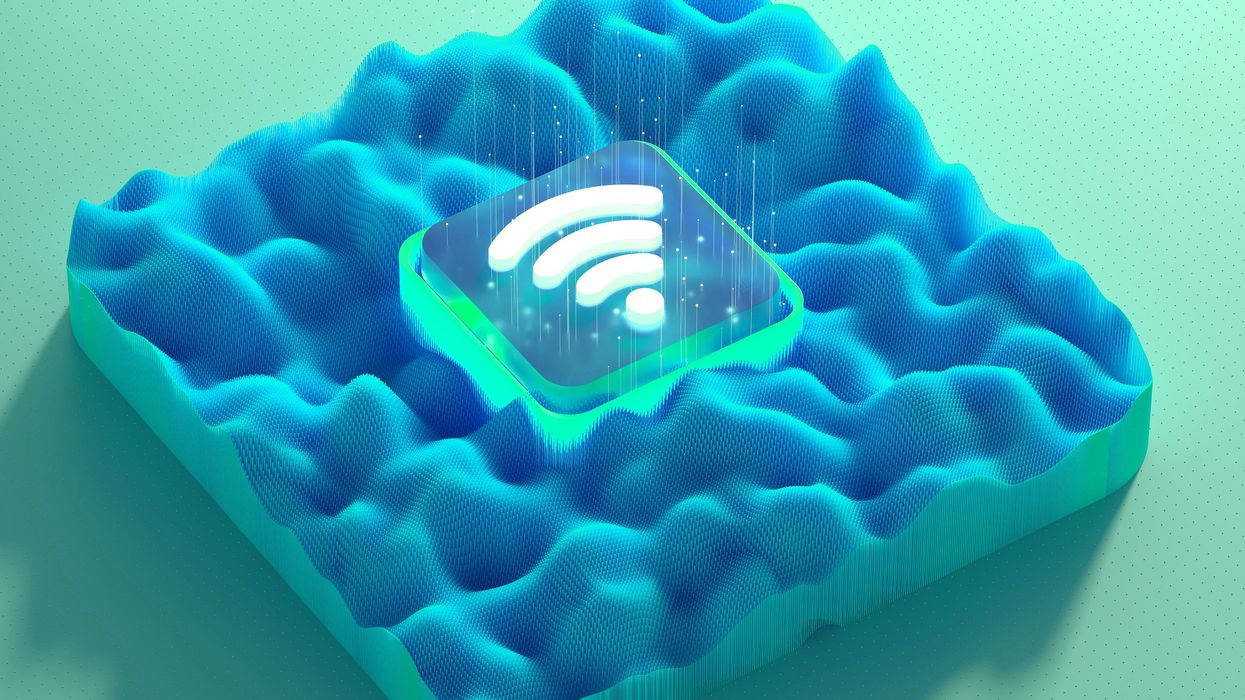

Wireless spectrum is always at a premium—if you’ve ever tried to connect to Wi-Fi in a crowded airport or stadium, you know the pain that comes from crowded spectrum use. That’s why the industry continues to tinker with ways to get the most out of available spectrum. The latest example: Qualcomm’s FastConnect 7900 chip, which the company unveiled Monday at Mobile World Congress in Barcelona.
Qualcomm touts the FastConnect 7900 as a provider of “AI-enhanced” Wi-Fi 7, which the company views as an opportunity to create more reliable wireless connections. The chip will also better integrate the disparate technologies of Wi-Fi, Bluetooth, and ultra-wideband for consumer applications. In addition, the chip can support two connections to the same device over the same spectrum band.
The FastConnect 7900 comes as the wireless industry renews its focus on reliability with Wi-Fi 7, the wireless tech standard’s latest generation. The emphasis comes in addition improving throughput and decreasing latency, something to which every Wi-Fi generation contributes.
(Wi-Fi is a range of wireless networking protocols based on the IEEE 802.11 set of standards. The IEEE is IEEE Spectrum‘s parent organization.)
AI-Enhanced Wi-Fi
“[Wi-Fi’s] a bit like the wild, wild West,” says Javier del Prado, vice president for mobile connectivity at Qualcomm. “It’s all sorts of devices out there, congestion, devices that come in and go off, access points that do this, access points that do that—It’s very difficult to guarantee service.” Del Prado says that AI is the “perfect tool” to change that.
Key to the FastConnect 7900’s capabilities is the chip’s ability to detect what applications are in use by the device. Different applications use Wi-Fi differently: For example, streaming a video may require more data throughput, while a voice chat needs to prioritize low latency. After the chip has determined what applications are in use, it can optimize power and latency on a case-by-case basis.
Using AI to manage wireless spectrum connections isn’t a new problem or solution, but Qualcomm’s chip benefits from running everything on-device. “It has to run on the device to be effective,” says del Prado. “We need to make decisions at the microsecond level.”
Put another way, using the Wi-Fi connection itself to transmit the information about how to adjust the Wi-Fi connection would defeat the purpose of AI management in the first place—by the time the chip receives the information, it’d be way out of date.
Also important: The chip doesn’t suck power—in fact, it saves power overall. “These are fairly simple models,” says del Prado. “It’s not a 5-billion parameter AI. It’s a much smaller model. The key performance indicators are the speed and the accuracy.”
Del Prado says that the chip’s power consumption is negligible. In fact, because of its ability to optimize power depending on what applications are running, the chip saves its device up to 30 percent in power consumption
.
Wi-Fi and Bluetooth and Ultra-Wideband, All in One
Outside of cellular, Wi-Fi is the most common way our phones connect with the world. But it’s not the only tech—Bluetooth is used for things like wireless earbuds, and ultra-wideband (UWB) also sees some use for applications like item tracking (think Apple’s AirPods) and locking and unlocking cars remotely. All three technologies rely heavily on proximity and distance ranging to maintain wireless connections.
“There are all these use cases that use proximity and that use different technologies,” says del Prado. “Different technologies bring different benefits. There’s not always a single technology that fits all use cases. But that creates complexity.”
Qualcomm’s FastConnect 7900, del Prado says, will hide that complexity. “We make it technology-agnostic for the consumer.”
Sharing Spectrum Bands
One final trick the FastConnect 7900 offers is an ability to host two Wi-Fi connections on the same band of spectrum. Here, the chip is building on previous FastConnect generations. “We already introduced what we call ‘hybrid-simultaneous’—this is the capability of doing multiple channels simultaneously on the 5 and 6 gigahertz bands,” says del Prado.
New to the 7900 is audio over Wi-Fi, says del Prado. Qualcomm is calling it “XPAN,” and it’s a separate channel for audio only in those 5 GHz and 6 GHz bands.
This matters because those spectrum bands can deliver a much higher audio quality to the device compared to, say, Bluetooth, which operates in the 2.4 GHz band. By carving out a separate channel just for audio, says del Prado, the 7900 chip can provide that much better audio quality without it succumbing to the strain that typically emerges when multiple connections demand the same wireless signal. “That’s something that cannot be done with Bluetooth today, because it’s bandwidth-limited,” says del Prado.
Qualcomm is already sampling the FastConnect 7900 to its customers—that is, manufacturers of phones and similar devices. Del Prado estimates that the first products with the chip will hit the market in the second half of the year. “When the new round of premium Android phones hits the market later this year, those should support this functionality.”
Reference: https://ift.tt/UM7IqyF
No comments:
Post a Comment